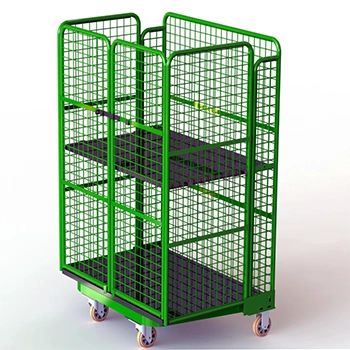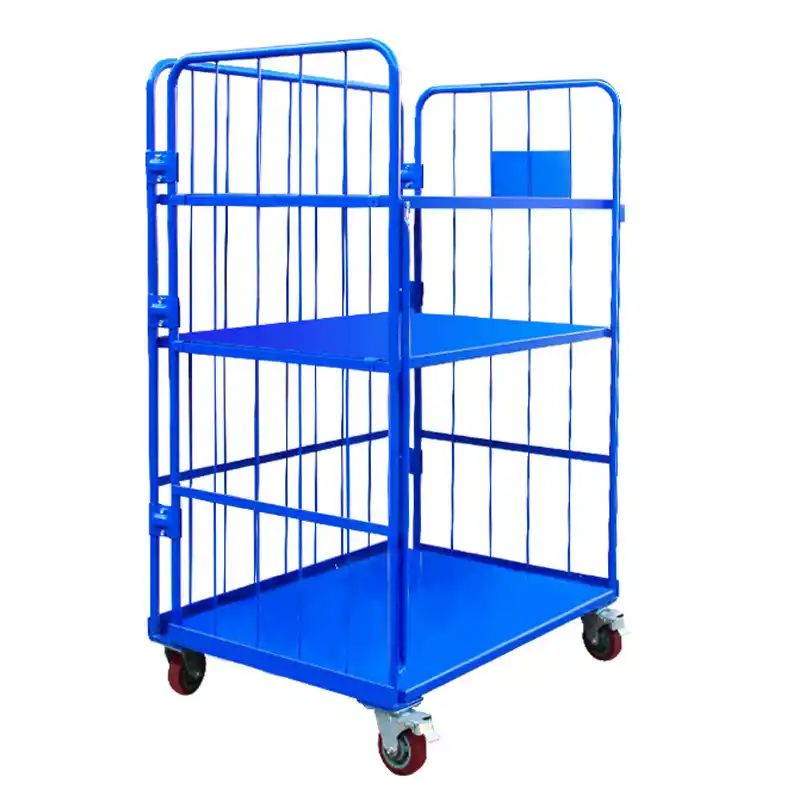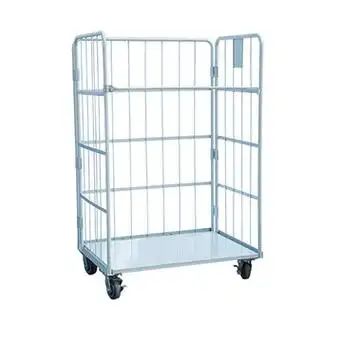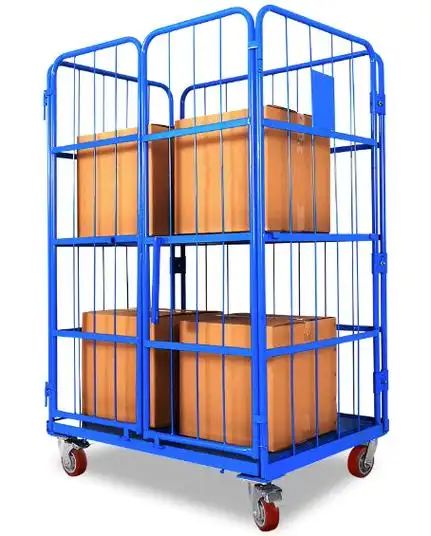Contact Us
Telephone: 86-187-6548-6789
E-Mail: boss@sdktdsy.com
WhatsApp: +86-134-5573-8888
Address: Qiujiadian Industrial Park, Qiujiadian Town, Taishan District, Tai'an City, Shandong Province




Product Details
Logistics trolley is an important logistics equipment, and the following is a detailed introduction to it:
1、 Definition and Alias
A logistics truck, also known as a cargo truck, cage truck, or turnover truck, is a unit mobile container equipment equipped with four wheels for transporting and storing materials.
2、 Structural characteristics
Wheel design: Logistics carts are usually equipped with four wheels, including two directional wheels and two universal wheels, which are convenient for manual pushing and turning.
Platform structure: The platform surface of logistics vehicles is generally made of materials such as rubber and plastic to protect the goods from damage. The design of the platform enables stable placement of goods, making them less likely to slip or tilt.
Foldable: Many logistics vehicles have the characteristic of being foldable, which can greatly save storage space and facilitate storage and transportation when not in use.
3、 Types and classifications
Logistics vehicles can be classified into various types based on their structure and purpose, such as detachable logistics vehicles, foldable logistics vehicles, and fixed logistics vehicles. These different types of logistics vehicles have their own characteristics and are suitable for different application scenarios.
4、 Functions and Applications
Improve handling efficiency: Logistics vehicles have a large carrying capacity and stability, which can quickly handle goods and improve handling efficiency. It is suitable for logistics distribution in large supermarkets, logistics turnover between factory processes, and other scenarios.
Reduce manual burden: Logistics vehicles can replace manual handling of goods, reducing the physical burden on operators and lowering labor costs.
Protecting goods: The platform design and material selection of logistics vehicles can effectively protect goods from damage, ensuring the safety of goods during transportation and storage.
Widely applicable: Logistics vehicles are suitable for various types of goods, including semi-finished products, finished products, raw materials on production lines, as well as packaging boxes, pallets, etc. in warehouses. It can meet the transportation needs of different industries and items.
5、 Safety operating procedures
To ensure the safe use and operation of logistics vehicles, it is necessary to develop and comply with corresponding safety operating procedures. This includes preparation work before equipment operation (such as checking whether the equipment has normal working conditions, whether safety signs are complete, etc.), equipment operation specifications (such as ensuring that operators have worn safety equipment, avoiding sudden turns or brakes, etc.), and equipment safety maintenance and training.
6、 Maintenance and upkeep
Regular inspection and maintenance of logistics vehicles are key to ensuring their long-term stable operation. This includes checking whether the casters are worn, whether the platform is deformed or damaged, and whether the connectors are loose. Any issues discovered should be promptly repaired or replaced. In addition, logistics vehicles should be regularly cleaned and maintained to maintain their good appearance and performance.
In summary, logistics vehicles are important logistics equipment with multiple advantages and a wide range of applications. When using logistics vehicles, corresponding safety operating procedures and maintenance requirements should be followed to ensure their safe and efficient operation.

You have not found a satisfactory product, please rest assured that we provide customized services.
We have superior customization capabilities to tailor products to your needs.
We believe that communication can inspire new ideas and look forward to working with you for a better future.
Please feel free to contact us.
Previous
Next
Previous
Previous
I want to make an inquiry
Series Products







